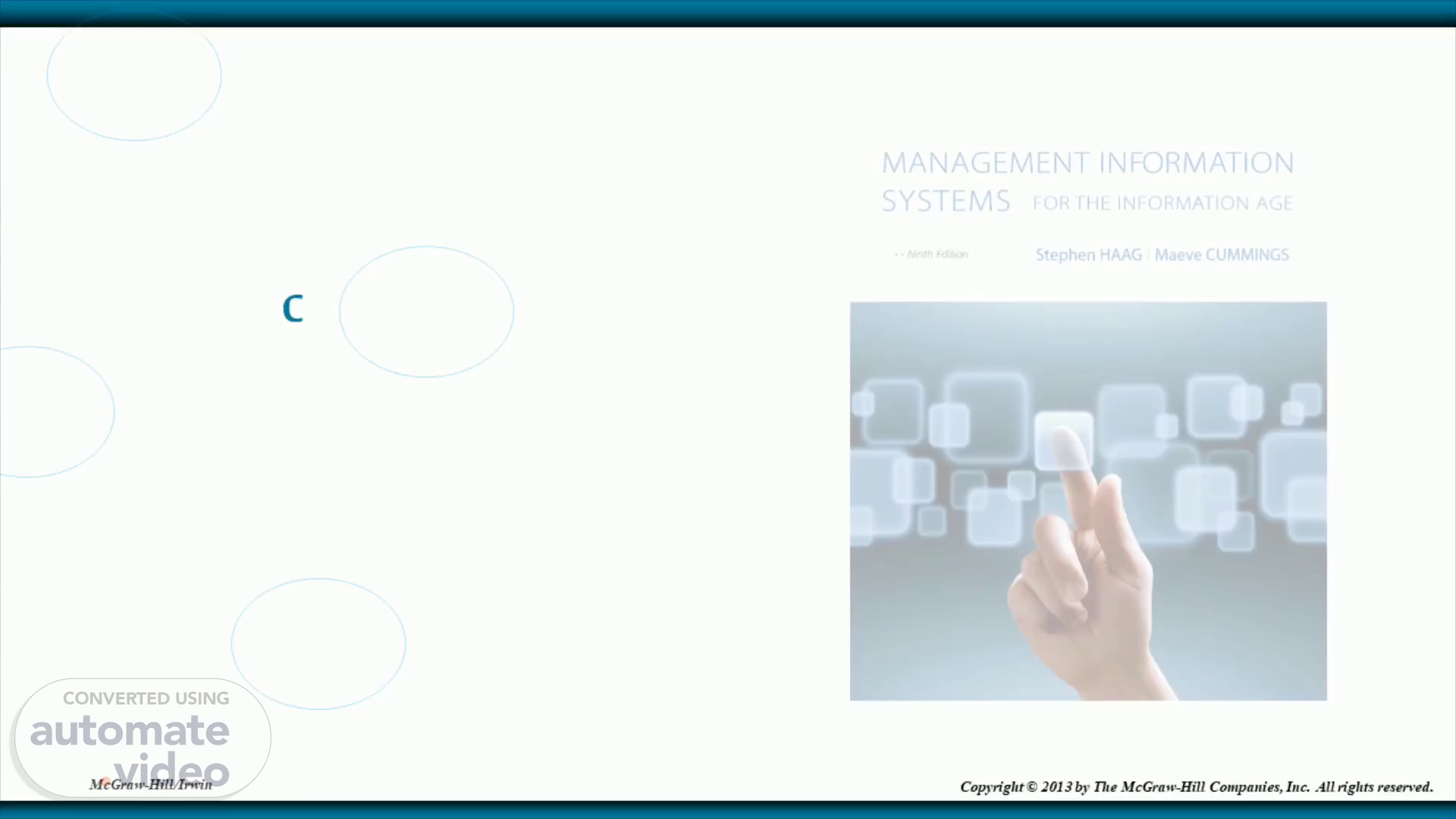Scene 1 (0s)
Chapter 1 – Part 1. The Information Age in Which You Live: Changing the Face of Business.
Scene 2 (11s)
Student Learning Outcomes. At the end of this part, you will be able to Define MIS. Describe the three resources within MIS: people, information, and information technology..
Scene 3 (25s)
Introduction. You live in a digital age How much do you rely on technology in your daily life?.
Scene 4 (39s)
When was the last time you used a pay phone? How often have you used a pay phone in the last year? If you needed to use a pay phone, would you know immediately where one was located? When was the last time you used your cell phone? How often have you used your cell phone in the last day?.
Scene 5 (1m 4s)
The year 2000 – typical hotel could budget annual revenue of $1,274 per room for in-room phone charges The year 2009 – typical hotel could budget annual revenue of only $178 per room for in-room phone charges Cell phones and technologies of all kinds are transforming entire industries.
Scene 6 (1m 25s)
Cell Phones Doom Phone Revenues for Hotels. Introduction.
Scene 7 (1m 36s)
MIS. Management information systems (MIS) – planning for, development, management, and use of information technology to help people perform all tasks related to information processing and management. MIS is: an important field of study and it’s an important business discipline.
Scene 8 (1m 51s)
MIS Organizational Resources. MIS deals with the coordination and use of 3 very important organizational resources People Information Technology.
Scene 9 (2m 0s)
The Synergy among the Three Resources of MIS. The synergy: It represents how people use information-based technology tools to: Achieve competitive advantage Do things cheaper and faster Increase revenue Innovate new processes.
Scene 10 (2m 15s)
MIS Resource #1: INFORMATION. There are 3 forms of information: data, information, and business intelligence..
Scene 11 (2m 26s)
1- Data – is raw facts that describe a particular phenomenon such as the current temperature, the price of movie rental, or your age 2- Information – is data that have a particular meaning within a specific context.
Scene 12 (2m 41s)
Information is often aggregated data that has meaning such as average age, youngest and oldest customer, and a histogram of customer ages.
Scene 13 (2m 57s)
3- Business intelligence (BI) – is collective information about… Customers Competitors Business partners Competitive environment BI can help you make important, strategic decisions.
Scene 14 (3m 11s)
Forms of Information (data, information, and business intelligence).
Scene 15 (3m 24s)
Quality Attributes of Information. Timeliness (Can you get it when you need it? + Does it describe the right time period?) Location (can you get it no matter where you are?) Form (can you get it in the most useful form to you: audio, text, animation, etc?) Validity (did it come from a credible source?).
Scene 16 (3m 52s)
Information from an Organizational Perspective. abstract.
Scene 17 (4m 8s)
Upward – describes the current state of the organization based on its daily transactions. Downward – strategies, goals, and directives that originate at a higher level and are passed to lower levels. Horizontal – between functional business units and work teams. Outward/Inward – from and to customers, suppliers, etc..
Scene 18 (4m 27s)
Internal information – operational aspects of the organization External information – environment surrounding the organization Objective information – quantifiably describes something that is known Subjective information – describe something that is unknown.
Scene 19 (4m 41s)
MIS Resource #2: PEOPLE. People are the most important resource in any organization, with a focus on Technology literacy Information literacy Ethical responsibilities.
Scene 20 (4m 52s)
People. Technology-literate knowledge worker – knows how and when to apply technology Information-literate knowledge worker Can define information needs Knows how and where to obtain information Understands information Acts appropriately based on information Ethics – principles and standards that guide our behavior toward other people.
Scene 21 (5m 8s)
abstract. You always want your actions to fall in Quadrant I – both ethical and legal..
Scene 22 (5m 21s)
MIS Resource #3: INFORMATION TECHNOLOGY. Information technology (IT) – computer-based tools that people use to work with information Hardware – physical devices that make up a computer Software – set of instructions that your hardware executes to carry out a specific task for you.
Scene 23 (5m 40s)
Information Technology – Hardware. Input device – tool for entering information and commands Output device – tool for see or hearing results Storage device – tool for storing information.
Scene 24 (5m 51s)
CPU – hardware that interprets and executes instructions (RAM temporarily stores information and software for the CPU) Telecommunications device – for sending and receiving information. Connecting devices – like cables, ports, etc..
Scene 25 (6m 5s)
Two types of software Application software – enables you to solve specific problems and perform specific tasks (Microsoft Word, payroll, inventory management, etc). System software – handles tasks specific to technology management (operating system, anti-virus, etc)..
Scene 26 (6m 23s)
Test your knowledge. End of Class. What is MIS? What are the resources of MIS? What are the 3 forms of information? What are the quality attributes of information? Describe information from an organizational perspective. What are the most important attributes in people in an organization? What is information technology?.
Scene 27 (6m 39s)
Watch this video to learn more about the impact of information technology on the organization.
